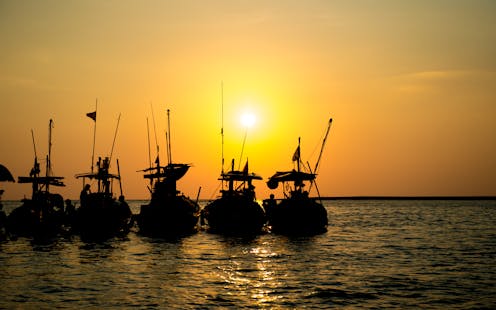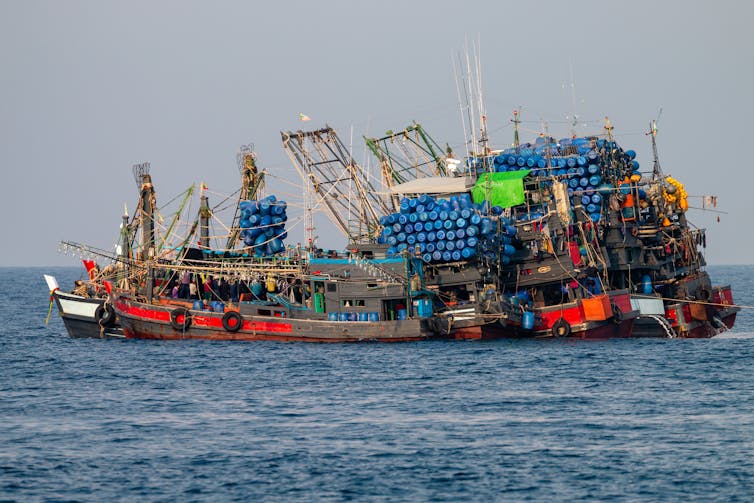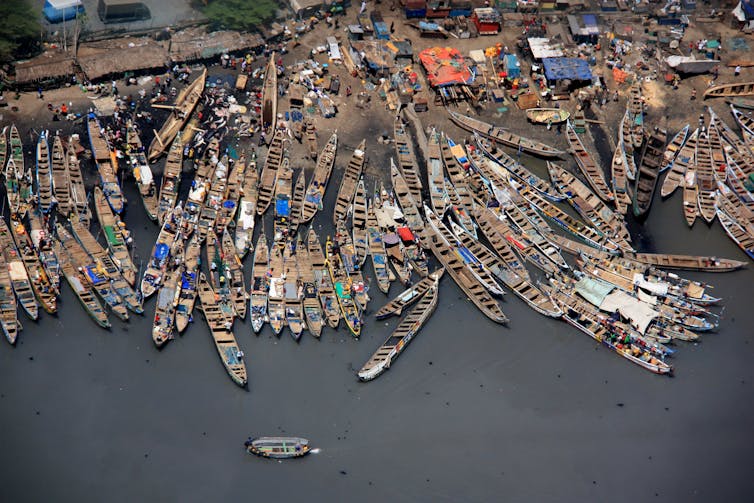
Fisheries management is complex, characterized by uncertainty, contest and compromise. It must balance scientific advice with myriad expectations from fishers, local communities, conservationists, corporations and consumers.
Fisheries also face the threat of illegal, unreported and unregulated (IUU) fishing. This makes management a struggle, exacerbates overfishing, destroys marine habitats and threatens millions of livelihoods worldwide.
Transparency has emerged as an essential tool for clarifying management and shedding light on IUU. Louis Brandeis, an American lawyer and former United States Supreme Court justice, once wrote that sunlight is the best of disinfectants, meaning people perform better and more honestly if their actions are observed and they are held accountable.
As calls for greater fisheries transparency grow louder, let’s take a moment to reflect on the importance of context for understanding where transparency exists and where it’s needed most.
Why is fisheries transparency important?
First, fish are a common good. Citizens have the right to know how they are exploited. Second, over a third of the world’s fish stocks are overfished. Third, seafood production is increasingly transboundary.
The often flawed perception of small boats feeding local communities is an oversimplification of a complex network spanning multiple jurisdictions.

Sustainably managing increasingly globalized and contested fisheries requires international co-operation and open decision-making.
As such, transparency advocates call on governments to divulge data on catches, stock status, finances, trade and vessel identification, ownership and location.
Civil society has been a key driver behind progress in these areas. But success is never straightforward nor cheap and is often dependent upon policy and governance.
Context is key
Transparency is vital where widespread unsustainable and illegal fishing severely impact local communities.
In West Africa, for example, fisheries support food security and livelihoods, but are often in poor or unknown condition. Illegal fishing there costs more than $2 billion each year.
Read more: Putting an end to billions in fishing subsidies could improve fish stocks and ocean health
Greater transparency could help communities receive a fairer share of fishery benefits. But for it to be effective, it must be coupled with reform elsewhere that improves enforcement, democratic processes and access to justice.
Transparency is not only a domestic issue. More than 60 per cent of illegal fishing in West Africa is committed by foreign vessels, particularly from Spain and China.
Effective transparency in this situation is not just about public information, but a function of financial and institutional capacity and the influence of foreign power and money on decision-making.
Transparency in Ghana
Recently the Ghanian government was called out for failing to publish adequate fisheries data, despite its commitment to 100 per cent transparency of industrial fleets.
But we can’t ignore the complicity of foreign governments — 44 per cent of industrial catches in Ghana are made by foreign vessels. The need for investment in Ghana has also allowed foreign businesses to infiltrate local fleets — more than 90 per cent of Ghanian industrial trawlers are Chinese-owned.
Financially and politically powerful fishing nations target countries with weaker governance, and may even be integral to creating that weakness by implementing policies that constrain small-scale fishers and let industrial fleets off the hook.
China is estimated to report only eight per cent of its industrial catch from West Africa, while the European Union reports 29 per cent. Foreign fleets in the region are notorious for obscuring their locations and illegally fishing in areas reserved for small-scale fishers.
In addition to the lack of published data, there is also a lack of accountability and justice. We believe transparency in Ghana is as much about revealing power struggles and the prioritization of corporate profit as it is about publishing data.
Transparency in Europe
In Europe, transparency looks quite different. Decades of relative political and financial stability have led to highly developed infrastructure and institutions. The EU has extensive online data sharing, including mandatory catch declarations, vessel monitoring systems and public registries of all vessels and company finances.
The EU also has a world-leading system for controlling imports and punishing opacity by denying poor performers access to EU markets — the notable exception being China. In fact, Ghana was recently issued a yellow card as a non-co-operating country in the fight against illegal fishing. The EU claims to have zero tolerance for illegal fishing.
However, the EU was recently labelled “hypocritical and neocolonial” for their refusal to implement measures against the overfishing of yellowfin tuna while being the largest beneficiary of their exploitation. The EU has reportedly undermined sustainability and authorized its vessels to fish unlawfully in African waters.
The EU’s economic clout has created a legacy of distortion that favours their fleets over others.
This dichotomy of transparency at home and opacity abroad raises several questions about how our expectations for transparency must reflect the realities of different contexts.
Let’s be clear about transparency
Making information public and opening up decision-making can reduce corruption, increase compliance and lead to fair and effective policies.
But transparency clearly depends upon on historical, cultural and financial realities. Expecting transparency to be one-size-fits-all can result in us oversimplifying the complexity of international fisheries.
Ignoring context may perpetuate power imbalances and promote the view that transparency is a so-called “developing world issue,” rather than ubiquitous. It may cast some nations as poor performers and others as world leaders, despite both having issues with opacity.

How we determine the arbiters of good governance sets a precedent for future decision-making, especially because transparency is no longer just about monitoring fishers, but is also about monitoring states.
Moving beyond symbolism
Why do we seek transparency in the first place? Is the goal to catch fish pirates? Maximize revenue? Or prioritize equitability? Ignoring equity issues can lead to transparency being regarded as intrusive and may be resisted or ineffective, especially in countries like Ghana.
We believe that transparency is one part of enabling conditions for delivering sustainable and equitable fisheries. It must be coupled with capacity-building for monitoring, enforcement and truly participatory stakeholder engagement.
It must overcome rigidity to allow multiple interpretations for transparency, including incorporating traditional or Indigenous knowledge systems. Those systems tend to focus on seasonality and leaving resources for the ecosystem, context-specific data types and are inclusive of different languages and cultural norms.
It must empower local communities to make informed decisions about the fate of their own resources and be attentive to existing transparency measures that rigid Eurocentric standards may not embody or recognize.
Ultimately, achieving transparency must not become more important than addressing the socio-ecological expectations that fisheries management set out to resolve. Effectiveness should be measured by sustainable and equitable outcomes — not the degree of transparency, but the degree to which fisheries sustainably and equitably serve local people.
Daniel Skerritt is an affiliated researcher with the Fisheries Economics Research Unit at the University of British Columbia, Canada, and Senior Analyst for Oceana’s Transparent Oceans Initiative. The work that forms the basis of this article did not receive any specific grant from funding agencies in the public, commercial, or not-for-profit sectors.
Dyhia Belhabib is a Principal Investigator at Ecotrust Canada and Director at Nautical Crime Investigation Services. The work that was the basis of this article was supported by Oceana in collaboration with the university of British Columbia.
This article was originally published on The Conversation. Read the original article.







